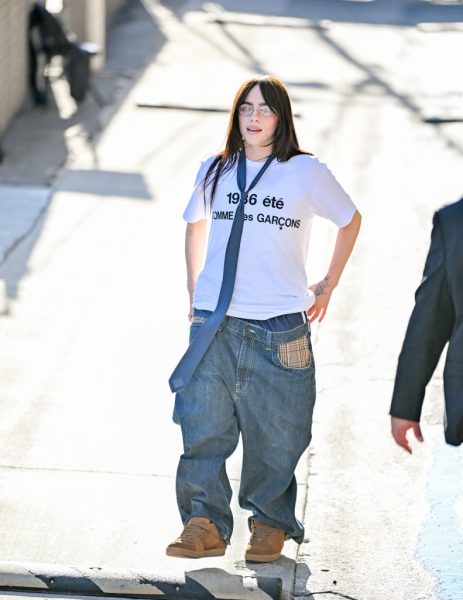
The past twenty years have been an eventful time for youth culture in high schools across America, and the post-COVID world is much different than the one before. This change is especially seen in the current trends in the style of dress among young people. Specifically, over the past five years we’ve seen a drastic increase in baggy clothing, as opposed to tight-fitting apparel, which prioritizes freedom of movement and comfort.
When taking a glance at clothing trends after the pandemic, it is evident that Generation Z has embraced a preference for baggy and comfortable fashion. On the other hand, many can recall skinny jeans being the hot topic prior to 2020, and a large number of Millennials still prefer skinny clothing, due to that being a fashion statement from their teenage years.
As a consequence, many young people feel as though the baggy aesthetic is superior to the skinny option. While this is a question of personal preference, it is interesting to dive into why we’ve seen such a drastic change in fashion, and how this has also affected our taste in music.
Many credit this monumental change in youth culture to the COVID-19 pandemic. During social distancing, we had to stay locked behind closed doors for the first time in our lives. It’s evident that Gen Z students saw no reason to wear uncomfortable skinny jeans and opted for something looser while studying at home.
Even in more recent years, jorts have gained popularity and were considered the look of the Summer in 2024. Additionally, many high school students are returning to the fashion of the 1990s, when loose-fitted clothing was also in style.
A particular brand that has made headway is Sp5der, which specializes in hoodies. This company also incorporates that oversized look by sort of “folding in” on itself, in line with the recent fashion trends.
Another popular trend includes Pro Club sweats, which were founded in LA in 1986, but only recently became increasingly popular in 2024. While on the topic of baggy sweats, it’s important to note that most manufacturers follow the same template.
Such sweatpants usually give off the look of straight jeans, but since they’re made with a looser fabric, combined with bigger pockets, it causes the sweats to layer on top of each other. Creating layers is a result of their oversized appearance and their higher percentage of cotton, which is preferred over polyester.
As for the other side of the picture, many have noticed how music artists of the 2010s have slowly died out and others have taken their place. People like Ed Sheeran, Rihanna, and Justin Bieber have seen their impact lessen, and we’ve already seen popular artists like Kendrick Lamar trump the competition as a result of his beef with Drake. Known people, like The Weeknd and Sabrina Carpenter, have gained more popularity, seemingly out of nowhere.
Music and fashion are connected and make each generation unique in its own way. They are both used to express our emotions and to show our creativity. It’s only natural that one trend would influence the other.
Clothing trends are usually influenced by musical influencers. For example, we’ve seen jorts make a comeback, after musicians A$AP Rocky and Billie Eilish began wearing them during the summertime.
Oversized clothes became a statement in the 1990s, after hip-hop artists like Tupac Shakur and Snoop Dogg became both music and fashion icons on the West Coast. Seeing as Gen Z likes to take inspiration from this hip-hop era of music, the connection between this style of music and baggy clothing is clear.
Although we can all hope that this era of youth culture will remain forever, we also know that this will all change some day. Cultural shifts happen every generation and are most seen in the youth. The newer generations have taken inspiration from the 1990s, when talking about fashion and even music. It would certainly be interesting if future generations took inspiration from their Millennial counterparts and restarted the skinny-denim clothing cycle. But baggy clothes are the dominant fashion for now.











